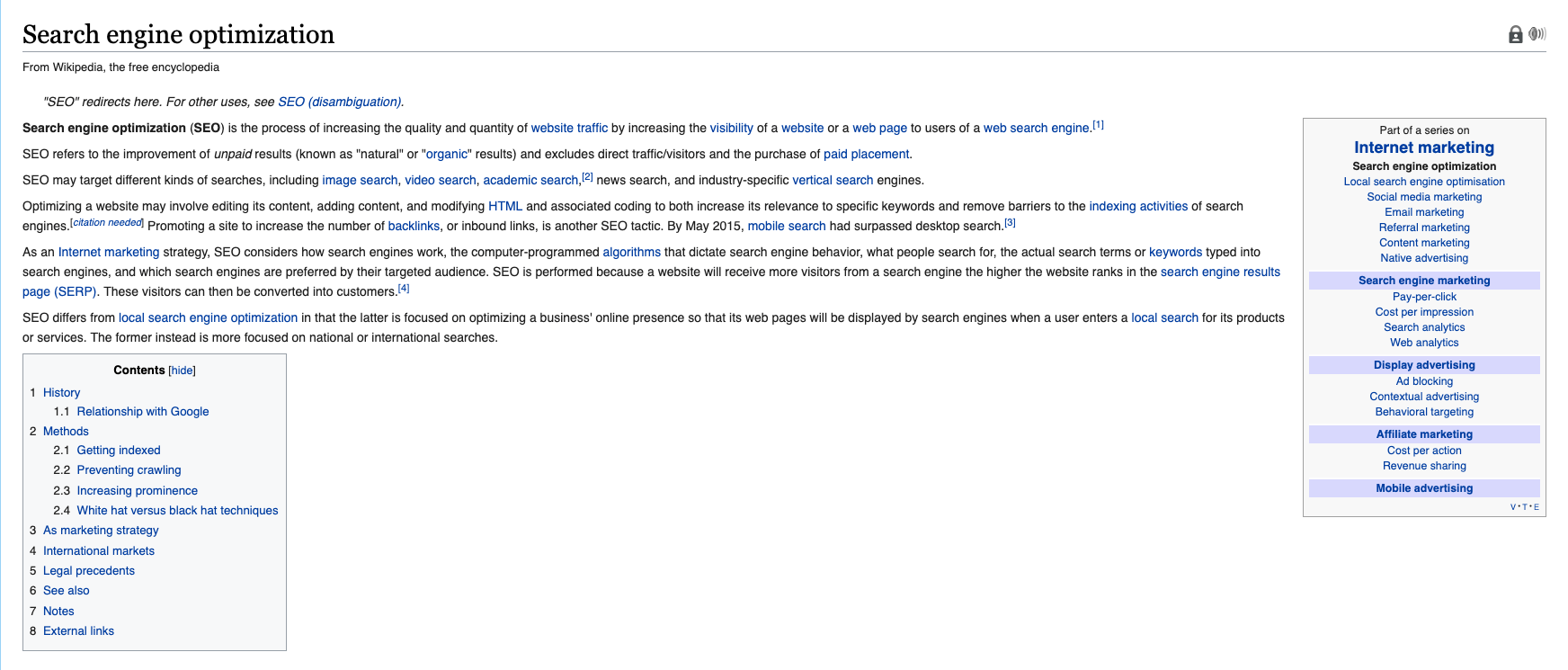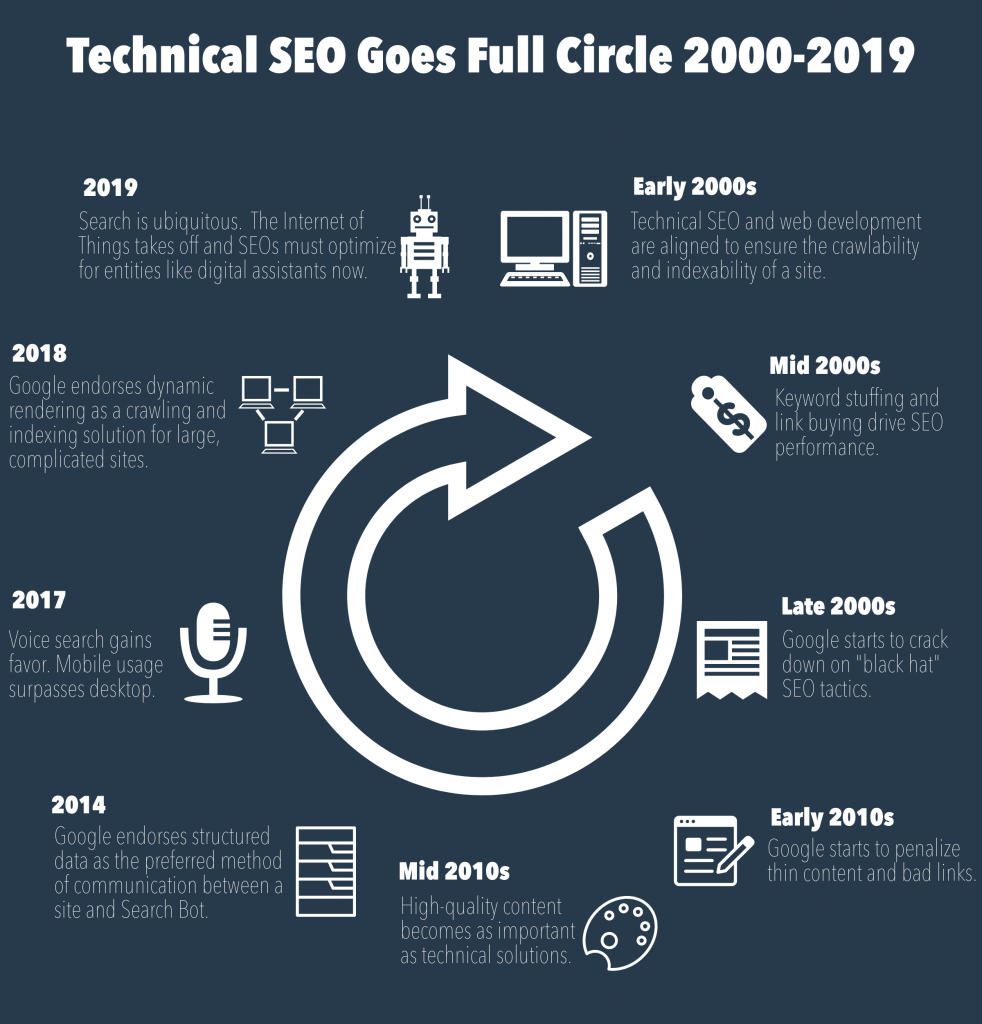SEO For Dummies
An effective guide to the science and art of SEO
An effective guide to the science and art of SEO
Make sure you are aligned with Google.
Our SEO Specialists handle software optimization with a keyword-driven approach towards site architecture, page design, and conversion optimization. This strategy helps both humans and Search Bots easily navigate the site, reach pages as fast as possible, and fully understand the content. Whether or not you partner with us on SEO, we recommend following this process for sustainable, long-term results in the organic search channel.
What I say to overcome the fear of SEO is to just be directionally correct and aligned with Google and the general direction they are heading in. You will get results as they update the algorithm. If you are back using tactics from the 1990s, that's a problem.
Search engines are answer machines trying to return results that are useful to a user’s query. One of the biggest goals of your website should be to create useful, informational, keyword-rich content that ensures a quality experience for your target customers. In the vast majority of cases, what is good for SEO is also good for the customer experience.
Billions of people are making billions of queries each day on search engines, 85% of clicks go towards organic results, and Google is driving hundreds of billions of dollars in revenue for over 1.5 million US businesses. SEO is only gaining more importance for marketers in virtually every industry from companies of all shapes and sizes. If you are in business, chances are, your customers are searching for related products and services and starting and finishing their associated buying journeys here. All of the research bears this out. What are you waiting for?
Think of the brands built through the organic search channel.



of total clicks go to organic results.
of internet users ignore paid results in favor of organic results.
of internet users never scroll past the first page of organic results.
of internet users do research on a product or service online before making a purchase.
New to SEO? That’s Ok. In this guide, we will walk through the process for determining keywords, URLs, title tags, meta descriptions, adding structured data, creating good content, mapping out internal links, acquiring external links, and generating calls to action.
Include the terms that your target market is searching for in your header navigation.
One of the first steps in any good SEO strategy is creating a list of the keywords you want to go after.
When Google's Search Bots hit a given page, you want to ensure that they can easily understand what it's all about.
Don't outsource your content creation. Have someone in-house who is a subject matter expert that deeply understands the business. It's not just important for Search Bots. It's also important for your target customers who can easily sniff out shallow work.
The days of trying to cheap the system are over. The best way to acquire links is to have content or tools that people actually want to link to.
I don't like content for content's sake. I'm not a fan of blogs either. I prefer integrating content onto core pages that convert.
So, there you have it – the basics of a sound page by page SEO strategy. This a proven method to build pages that capture more qualified leads surfing the web and drives more revenue for your business.
Google’s mission is to access and organize the world’s information as best as possible. Companies and websites that make that mission easier are strongly preferred by Google. Wikipedia pages are a great example of pages optimized for Google. They are built in flat HTML, they load quickly, navigation is easy and intuitive, and the content is excellent.

At Huckabuy, we are often asked about the tools and resources we rely on for SEO. We utilize Google’s suite of free analytics software and testing tools to get the job done. In the same way we take all our product and service cues from the search engine, we find these offerings really help us monitor and troubleshoot the performance of our customers’ websites as well as our own. In short, you don’t have to shell out a ton of money to keep track of your SEO.
Google’s free Structured Data Testing Tool provides a method to build, test, and modify structured data markup on your web pages. It is particularly helpful indicating the presence of structured data, as well as identifying any errors in the markup that need to be addressed.
SEO began as a technical initiative, and while content creation and subject matter expertise became more important as search engines grew more sophisticated, the purpose of SEO has come full circle. Voice search and the Internet of Things have gained prominence as websites have more interactions not just with Search Bots, but other digital assistants as well.
The organic search channel used to be the wild, wild west. It was easy to game Google’s algorithm, and as a result, a lot of marketers were turned off by the channel. Those days are over. As Google has improved its algorithm, they have caught up to a lot of the garbage. Now, they are telling SEOs exactly what they want from a technical perspective. They have specifically endorsed structured data markup and dynamic rendering in order to improve the crawling and indexing experience for their Search Bots.

A: SEO, also known as Search Engine Optimization, is the process of increasing the quality and quantity traffic to your website through organic search results, as opposed to other channels like direct, referral, and paid advertising. The initial objective is to create a website structure, keyword strategy, and content plan that matches the queries of your target audience in search results. Once you have achieved this, the next step is to ensure that your results are enticing target customers to click through to your website and to scale that incoming traffic on a daily, weekly, monthly, and annual basis.
A: There are a number of factors that go into making SEO work. The process is typically divided into three buckets: on-page SEO, off-page SEO, and technical SEO. On-page SEO includes good content, keyword-laden title tags, URLs, and alt-text for images, among other best practices. Off-page SEO mostly revolves around external backlinks to your site. Technical SEO includes sitemaps, structured data, page speed, and mobile-friendliness among other factors.
A: Organic search is the most scalable, sustainable, and lucrative online marketing channel. With billions of people making billions of searches each day and preferring organic results to paid results, businesses of all sizes in every industry stand to benefit from this channel. That’s what makes SEO such a valuable endeavor. If you want to reach your target market in this channel you need to have a strategy in place for keywords, content, site architecture, and technical SEO to reach these prospects, entice them to click through to your website, and convert them into loyal customers.